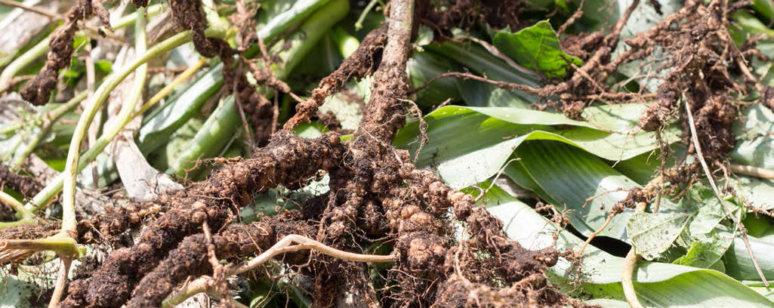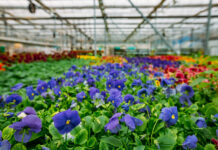Dr. Karen O’Hanlon discusses biological organisms position as a plant growth promoter within a chemically regulated environment
Plant Growth Promoting Bacteria (PGPB) are naturally occurring reproducible organisms which are used as fertilisers and pesticides. These bacterial strains are used routinely and effectively in many developing countries for plant growth promotion. In Europe, where agricultural chemicals remain relatively inexpensive compared to the cost of food, the use of PGPB occupies a small, but growing, niche in the development of organic agriculture.
The microbial inoculum has several advantages over artificial agricultural chemicals. They are environmentally friendly, renewable sources of nutrients and phytohormones that can restore soil fertility, ultimately improving plant growth and also alleviate abiotic stresses.
PGPB – as anti-fungal agents – are highly targeted to particular species, while chemicals have a broad-spectrum mode of action. For example, chemical fungicides target all or most fungi, which can result in variable quality and efficacy of PGPB under field conditions.
Currently, there are also challenges with PGPB product registration. However, due to the probable lower toxicity and ecotoxicity of these environmentally available strains of bacteria, it is probable that the registration process will speed up once the regulatory bodies establish a clear framework among all EU member states for registering these biological products.
Many companies are commercialising these organisms as products for use as soil conditioners and fertilisers; circumventing the need to register them as plant protection products (PPPs). Other long-established agrichemical companies are registering these PGPB under the PPP legislative framework. Bayer Crop Science, for instance, has commercialised Serenade ASO (Bacilus subtilis) in Europe as an anti-fungal agent containing the spore-forming micro-organism. Agrichemical companies have registered approximately 30 fungi and bacteria as PPP for use in the EU. This list encompasses strains of Trichoderma, Bacillus, Pseudomonas, and Azotobacter amongst many and enables the company to write PPP claims on the label that non-registered products cannot.
The PGPB field is growing as other smaller commercial companies are entering from various sectors. Progressive seed companies have purchased nitrogen-fixing bacterial strains to coat legume seeds for some time now. Because of these partnerships, soya, lupine, clover, alfalfa and bean seeds have also been successfully coated and used in Europe. No regulations on the use of Rhizobium strains are enforced in Ireland, Germany or Italy currently; however, France, a large legume producer, requires registration as a PPP.
The long-awaited draft EU fertiliser Regulation published in July 2019 – and due to come into force in 2022 – includes Rhizobium, Azotobacter, Azospirillium (three nitrogen-fixing bacteria) and Mycorrhizal fungi. Products containing these named organisms will be handled under this fertiliser regulation (including France). They will not have to be registered under PPP regulations to make an efficacy claim on the label. It is hoped that this biological list in the fertiliser regulation will extend to include other beneficial organisms in time.

Efficacy trials need to demonstrate the benefits of their use to improve yields in order to approve the use of PGPB by commercial growers and farmers. The environmental sustainability and long-term soil conditioning benefits are unquestionable, however many farmers are mainly interested in the potential percentage yield increases. One of the significant problems with the long-term benefits is that many farmers in Ireland occupy rented land and cannot justify the costs of using PGPB for the long-term improvement in soil quality when they may not be using the land the following season. This is one challenge that needs to be addressed by integrated pest management (IPM), including the framework Directive on the sustainable use of pesticides (EU DG Environment) and member states should incentivise farmers to think of the long-term sustainability of land rather than short-term measures.
TIGHTER RESTRICTION ON CHEMICALS CAN BENEFIT BIOLOGICALSPolicy in the EU aimed at developing the agricultural sector emphasises the necessity for a reduction in the use of chemical agents. The EU is required by Regulation (EC) 1107/2009 to establish a list of substances identified as “candidates for substitution”. The list identifies active substances with specific properties. For PPPs containing these active substances, member states will be required to evaluate whether they can be replaced (substituted) by other adequate solutions (chemical and non-chemical). The current draft list contains 77 candidates for substitution. Likewise, 155 products previously registered with the Department of Agriculture as a PPP have allowed their registration to expire or been revoked between 1/1/18 and 1/1/19 and as it stands most of these mainly herbicidal and fungicidal named products will be illegal to use by mid-2020. Removal from the list can occur for several reasons, most notably, the banning of the pesticide in the EU, failure to pass the risk assessment or the removal of the product from the market by the applicant. Other legislative measures put in place in 2009 include IPM and the Framework Directive on the sustainable use of pesticides (EU DG Environment). The idea behind IPM is to combine different crop management practices to overcome the shortcomings of the individual system. Likewise, member states have been encouraged to use rural development programmes (funded under the Common Agricultural Policy) to provide financial incentives to farmers to begin implementation. The new legislation gives a specific status to non-chemical and natural alternatives to conventional chemical pesticides and requires them to be given priority wherever possible. Biopesticides should generally qualify as low-risk active substances under the legislation. Low-risk substances are granted initial approval for 15 years rather than the standard 10. A reduced dossier can be submitted for low-risk substances, but this must include a demonstration of sufficient efficacy. One requirement for low-risk substances that has still to be elaborated is that their half-life in the soil should be less than 60 days; this may cause problems for some microbial biopesticides as the main aim of using biologicals is that the organism establishes in the soil and continues to exert its beneficial effect while reproducing. The use of microbes in agriculture is expected to become even more prevalent as a result of political and public pressure arising from the climate change crisis. As knowledge surrounding the specific interactions between different microbes and varieties of plants and animals develops, the benefits of their targeted specificity will be further understood and employed. This, in turn, will emphasise the attractiveness of microbes as a more environmentally sustainable alternative to the broadspectrum mode of action of chemicals in agriculture. It should be noted that knowledge and data from non-developed countries will, in many cases, be superior in this area as biological organisms have been in use in these regions since the 1940s on account of the cost of chemicals being cost-prohibitive. ✽
|







